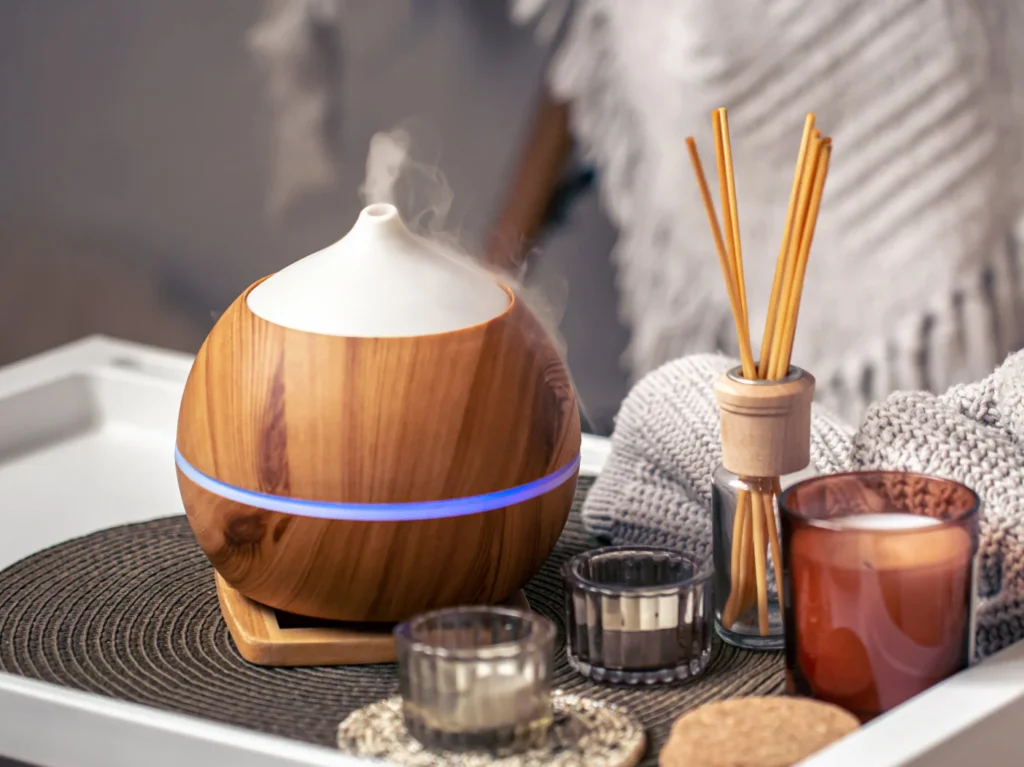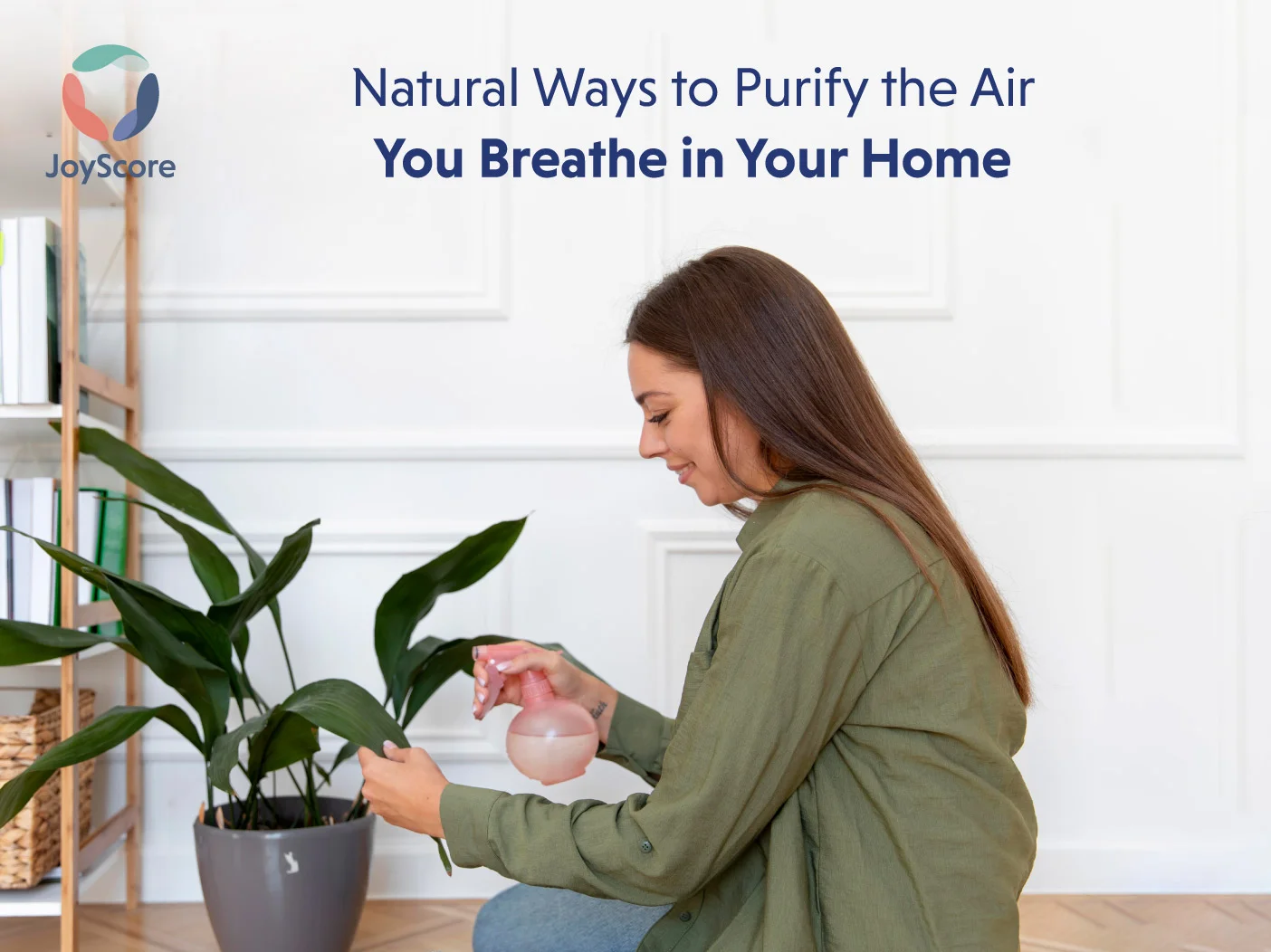Breathing in fresh, clean air is essential for a healthy and happy life. Unfortunately, the air quality inside our homes can be compromised by allergens, pollutants, and other airborne irritants. But don’t worry. You don’t need to invest in expensive air purifiers or chemical air fresheners to clean the air in your home. Instead, there are natural and cost-effective ways to purify the air and make your home a healthier and more pleasant place to be. In this article, we will explore ten natural ways to purify the air at home, from using houseplants to creating an aromatherapy space. With a few simple changes to your home, you can enjoy clean and pleasant air without compromising comfort or style. So, what are you waiting for? Download Joyscore to discover the ten natural ways to purify the air in your home.
What is air pollution?
The presence of pollutants in indoor air causes air pollution. The pollutants can be either gaseous or liquid and may be toxic or non-toxic. The pollutants in indoor air may be generated from the indoor environment or treated indoor air. Air pollution is generated by various factors, such as coal-fired power plants, automobiles, industrial equipment, burning wood or garbage, and outdoor air pollution transported indoors. Air pollution can cause various health problems, such as allergies, asthma, chest infections, and cancer. Furthermore, it can also cause stress, low concentration, and concentration headaches.
Benefits of cleaner air in the home

There are numerous health benefits to using cleaner air in your home. Cleaner air in your home can help to prevent allergies and boost your immune system. Cleaner air can also help lower blood pressure and prevent stress and migraines. Some people experience improved concentration and focus when breathing cleaner air. Besides these, cleaner air can also make your home more comfortable. The cooler indoor temperatures make your home feel cooler and more comfortable. Furthermore, high indoor humidity levels may cause health problems such as allergies and asthma. Using cleaner air in your home can help to prevent these problems.
Houseplants purify the air.
Houseplants are a great way to clean the air in your home. Houseplants absorb unwanted odours and pollutants from indoor air and produce fresh, pleasant odours. Some plants can purify the air in your home, including the following.
– Spider plants – Spider plants are excellent indoor air cleaners. These plants have long, thin leaves that can easily filter tiny airborne particles from the air. They are also great at removing odours from the air, making them ideal for an air-purifying space.
– Snake plants – Snake plants are also great air-purifying plants at home. They grow best in low-light environments where they can easily absorb volatile airborne particles. Snake plants are also great at removing odours from the air, making them the perfect indoor plant for an air-purifying space.
– Cactus plants are an excellent choice for an air-purifying space. These plants have high air-cleaning qualities, making them excellent for purifying the air.
Salt lamps to reduce pollutants

Salt lamps are a great way to reduce pollutants in your home by releasing a pleasant scent. These lamps are effective air filters and are known to have anti-microbial properties, making them an ideal air purifier. Moreover, salt lamps absorb negative ions in the air and generate positive ions, making them a great way to reduce pollutants. Salt lamps are an excellent way to create an air-purifying space in your home. They are light enough for placement on a table, desk, or nightstand, making them easy to access and use. Salt lamps come in various shapes and sizes, so you will find one that suits your décor. You can pair a salt lamp with other decors to create a unified look. You can use a salt lamp in your home to reduce pollutants.
Aromatherapy to purify the air
Do you have a scent that relaxes you and makes you feel at ease? Aromatherapy is a great way to create an air-purifying space in your home. Aromatherapists create scents that are meant to improve mental and physical health, but they are also known to be great at reducing airborne pollutants. Aromatherapy is a popular treatment for depression, anxiety, stress, and other mental health issues. Aromatherapy is a cost-effective treatment with minimal ingredients and no harmful side effects. If you want to try aromatherapy to reduce pollutants in your home, you can create your scented oils or purchase scented oil diffusers. You can also use an aromatherapy treatment for relaxation, stress relief, and sleeping. Aromatherapy is used in many different ways to create a purifying space.
Beeswax candles to reduce pollutants
Beeswax candles are one of the best ways to create a purifying space. These candles are made from natural ingredients. Also, have a long burn time which makes them excellent at reducing airborne pollutants. Beeswax candles have a pleasant honey fragrance with no harmful chemicals and are recommended by the American Medical Association as a safer alternative to standard candles. You can use beeswax candles to create a purifying space in your home. You can place them near windows or doors to block the incoming air, use them as room dividers, or use them as night lights. You can also make your beeswax candles. Combine beeswax with oils like vanilla, lemon, or lavender to create your scented candles. You can also use beeswax as a moisturiser or makeup remover.
Charcoal absorbs odours
Charcoal is one of the most efficient ways to absorb odours in your home and is ideal for creating a purifying space. Charcoal is made from burning wood, making it rich in minerals and trace elements. It is ideal for absorbing odours and is also known to absorb electromagnetic frequencies. You can use it to absorb the strong odours from your garbage disposal or refrigerator and from pet odours. You can also use it as a room divider to prevent smells from affecting other rooms of your home. You can also use it to absorb the pungent smells from rotting food by placing it in a bowl with the food and covering it with a lid. It is important to remember that charcoal should never be used in an oven as it may catch fire.
Essential oils to neutralise foul odours
If you have an unpleasant odour in your home, you can use essential oils to neutralise it. These oils are natural compounds extracted from plants and flowers and have been used for centuries for aromatherapy. They are non-toxic, with no side effects, and can effectively neutralise foul odours. You can use essential oils as a room deodoriser or a natural air freshener by placing them in a bowl and covering them with a lid. You can also mix essential oils with water and spray them in your home as an effective air freshener. You can also use essential oils as an insect repellent.
Air purifying bags to absorb odours
Air purifying bags are another effective way to create a purifying space in your home. These bags are made of medical-grade charcoal and are designed to absorb the strongest odorsodoursing them ideal for use in the garage, the basement, or a smelly room. You can use them to block the pungent smells from these areas, such as garbage or anything that has gone bad. You can also use them as room dividers to prevent smells from affecting other rooms of your home. Air purifying bags are available in various styles and sizes, so choose the one that fits your needs. You can also place several bags in your home to create a multi-function air purifier. Another advantage of air purifying bags is that they are inexpensive, making them an excellent choice for budget-friendly families.
Vacuuming regularly to reduce allergens
Regularly vacuuming your floors, rugs, and furniture can remove dust and pollen from the air, two of the main contributors to indoor air pollution.



